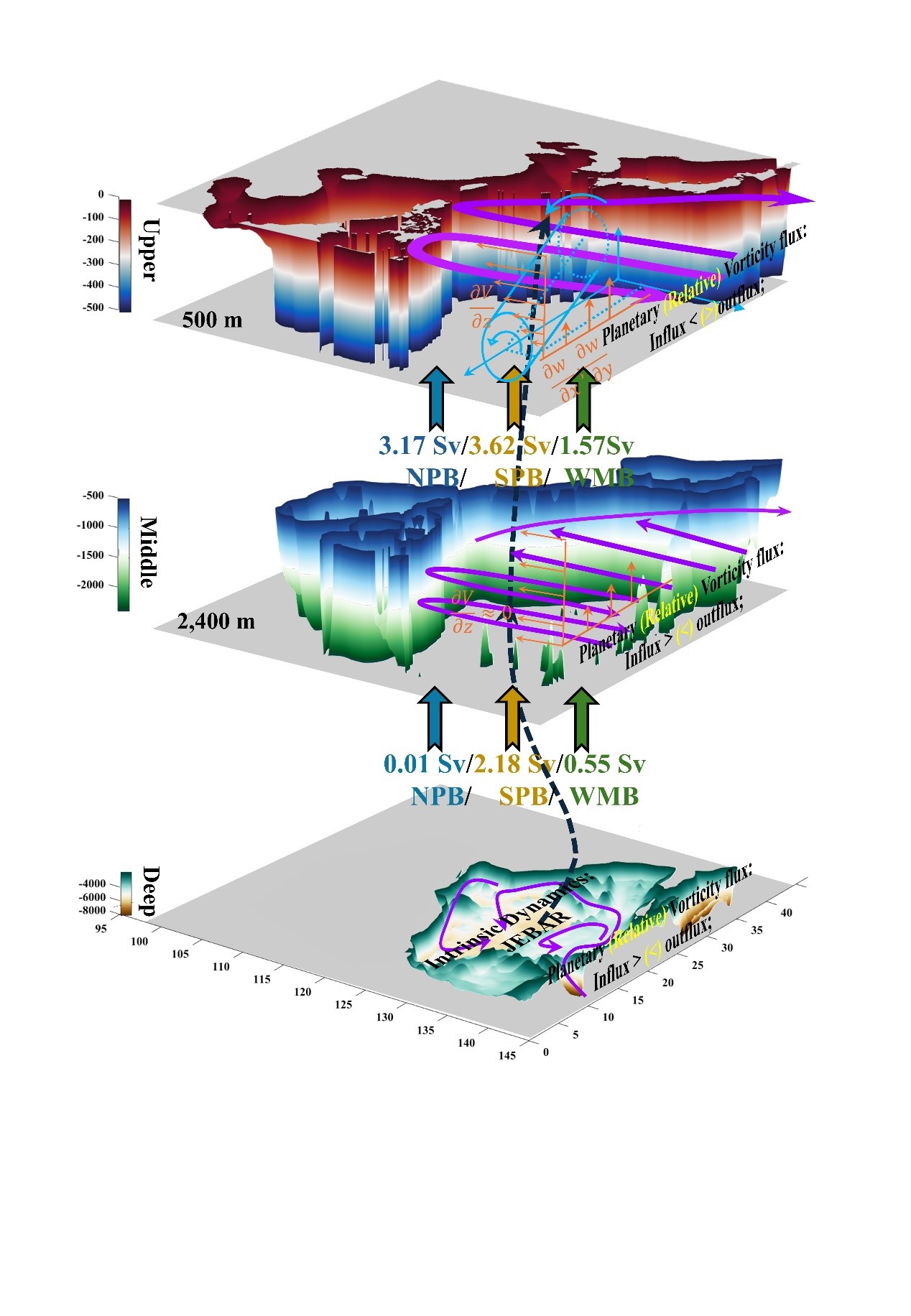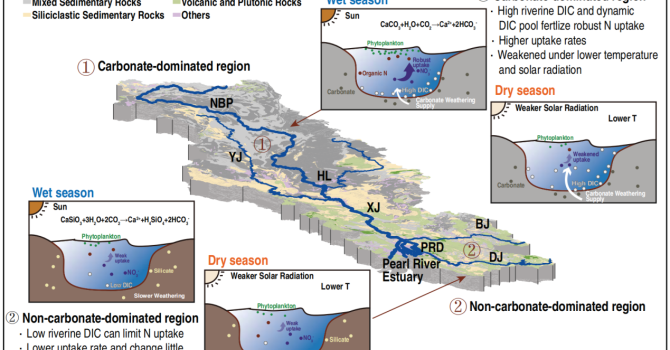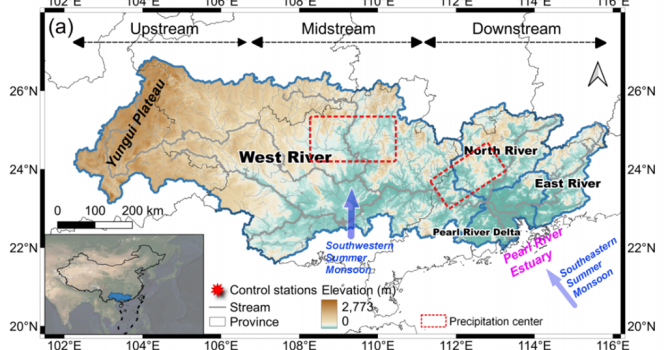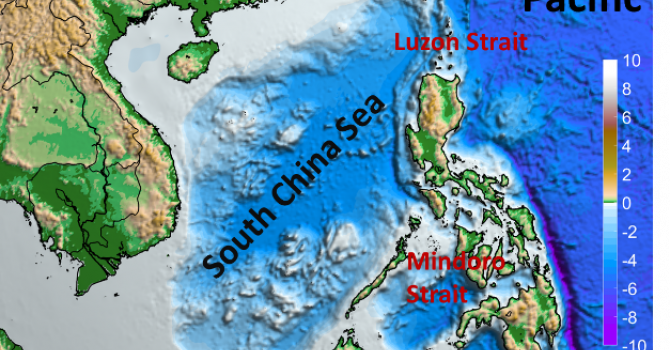The "Breathing Pump" of the Philippine Sea: How 3D Circulation Couples External Drivers and Internal Responses
Beneath the seemingly calm ocean surface lies a complex, layered circulation structure. A recent study by Professor Jianping Gan's team at the Hong Kong University of Science and Technology, published in Progress in Oceanography, systematically reveals the formation mechanisms and dynamic sources of the three-layer circulation in the Philippine Sea. The research clearly depicts how this sea acts as a "Dynamic Hub" for the Western Pacific, receiving large-scale external forcing while internal processes – complex interactions between currents and topography – work together to shape its complete three-dimensional circulation structure.
Research Background
From an ocean circulation perspective, the Philippine Sea is the "Circulation Heart" of the Western Pacific. It is not only the critical bifurcation point for the North Equatorial Current, giving birth to the Kuroshio and Mindanao Currents, but also a vital channel connecting upper and deep-water exchanges. Antarctic Bottom Water continuously enters the deep Philippine Sea through the single, narrow Yap-Mariana Junction (YMJ) passage. Driven by complex seabed topography and three-dimensional current interactions, basin-wide upwelling transports nutrient-rich deep waters to the sunlit surface layer, supporting the local marine ecosystem. Furthermore, circulation changes here are carried by currents like the Kuroshio – often called an "Ocean Artery" – into adjacent seas such as the East China Sea and South China Sea, directly influencing their circulation patterns, water properties, and ecological dynamics. Understanding the three-dimensional dynamic mechanisms of the Philippine Sea is key to accurately deciphering how this "Circulation Heart" functions.
Research Methods
Unraveling such a complex 3D circulation system requires powerful research tools. The team used the rigorously validated China Sea Multi-scale Ocean Modeling System (CMOMS, https://odmp.hkust.edu.hk). Its strength lies in localized optimization of physical parameters, enabling more accurate simulation of complex processes in the Philippine Sea, western boundary current systems, and China's coastal seas. Crucially, the team innovatively applied the Layer-Integrated Vorticity Equation (LIVE) diagnostic framework. This method, combined with model outputs, precisely traces and decomposes the sources of vorticity that sustain the circulation. It clearly separates external forcing (like planetary vorticity flux) from internal dynamics (like current-topography interactions), providing an unprecedented clear view of how the circulation is driven and how it self-adjusts.
Key Findings
This study is the first to systematically reveal the Philippine Sea's full three-layer circulation structure and their distinct driving mechanisms:
- Upper Layer (<500 m): An anticyclonic circulation driven mainly by planetary vorticity flux, reflecting large-scale external forcing.
- Middle Layer (500–2,400 m): Also, an anticyclonic circulation, but its dynamic source shifts fundamentally, now sustained by both horizontal and vertical relative vorticity fluxes.
- Bottom Layer (>2,400 m): A cyclonic circulation. Its power source returns to planetary vorticity flux, but it ultimately balances through JEBAR (Joint Effect of Baroclinicity and Relief) and complex topography, highlighting the decisive role of seafloor terrain in shaping deep bottom flows.
The research further found that an imbalance in horizontal water inflow and outflow across layers triggers a net upwelling motion throughout the Philippine Sea basin. This acts like a massive "Breathing Pump," bringing deep, nutrient-rich waters to the upper layers. This horizontal and vertical transport most significantly influences the middle layer circulation, directly causing the planetary vorticity flux to become a sink term for the mid-layer anticyclonic flow.
Schematic diagram of the layered circulation control processes in the Philippine Sea and its sub-basins. Arrows indicate vertical transport directions in the North Philippine Basin (blue), South Philippine Basin (yellow), and West Mariana Basin (green). Numbers show transport fluxes across the 500m and 2400m depth interfaces for each basin.
Research Significance
The value of this research extends far beyond uncovering the circulation secrets of the Philippine Sea. For ocean dynamics, it helps explain the mechanisms behind the North Equatorial Current bifurcation and subsequent changes in Pacific western boundary currents. In practical terms, the strength and efficiency of the Philippine Sea circulation directly affect the properties of water entering the East and South China Seas, influencing the coastal environment, fishery resources, and regional climate. This study clearly demonstrates the synergistic mechanism between external drivers and internal responses in the Philippine Sea circulation, providing crucial support for future research on the linkages between Northwest Pacific Ocean dynamics and the ecology of China's coastal seas.
For more detailed, please refer to: Liang, L., Gan, J., Kung, H., Hui, C., 2025. Layered circulation and dynamics of the Philippine Sea. Progress in Oceanography. https://doi.org/10.1016/j.pocean.2025.103597



